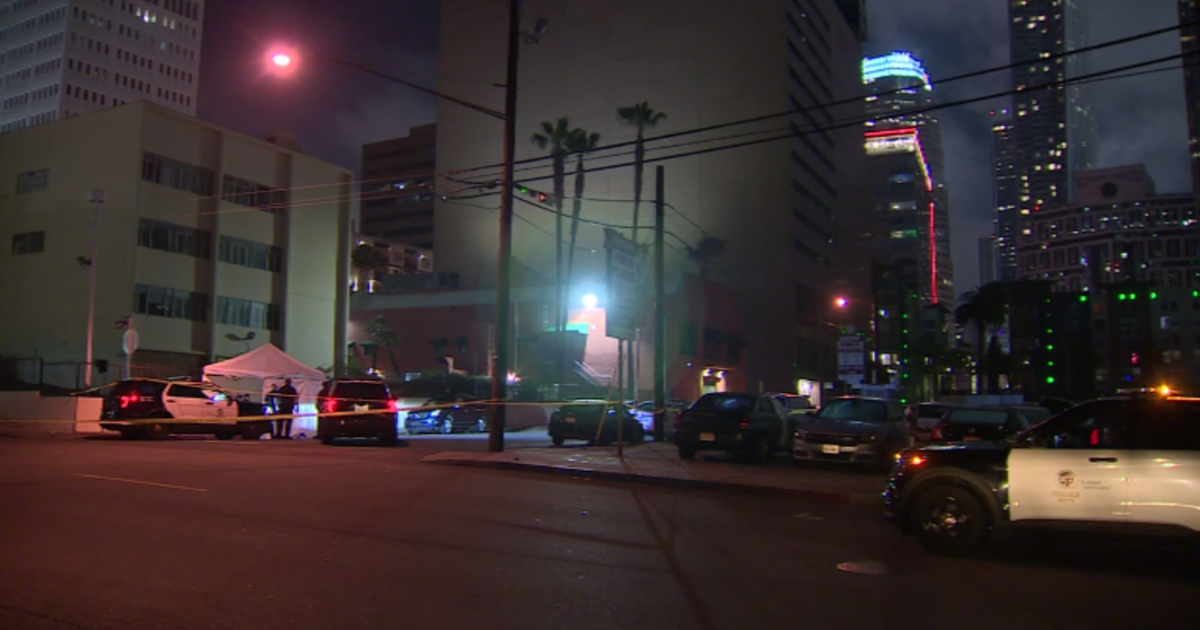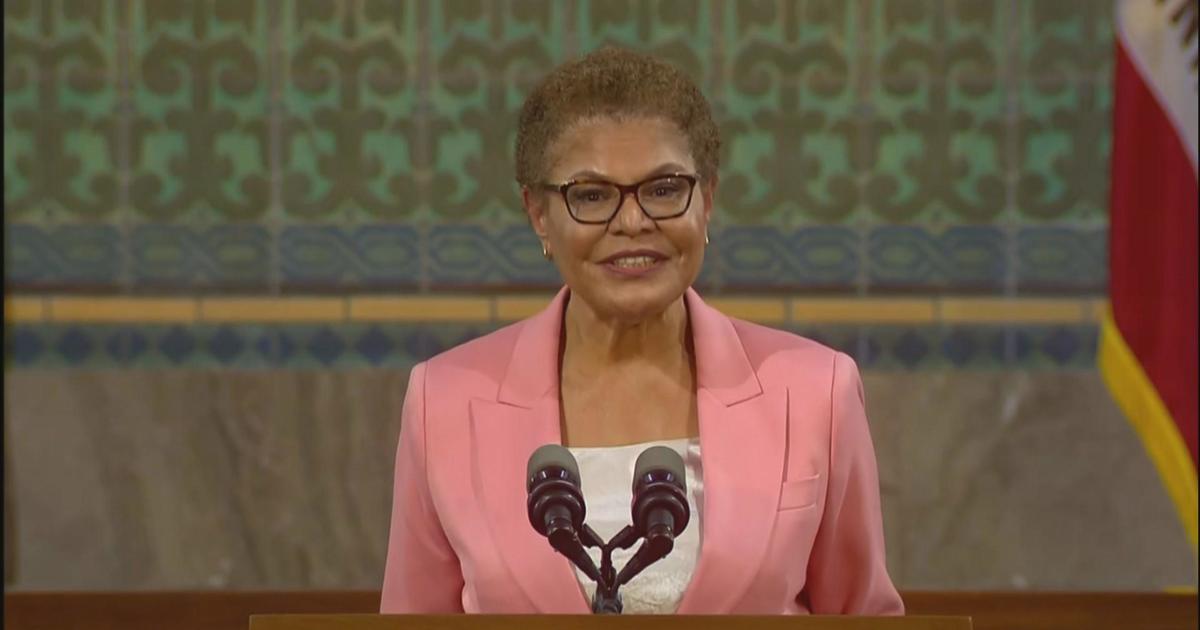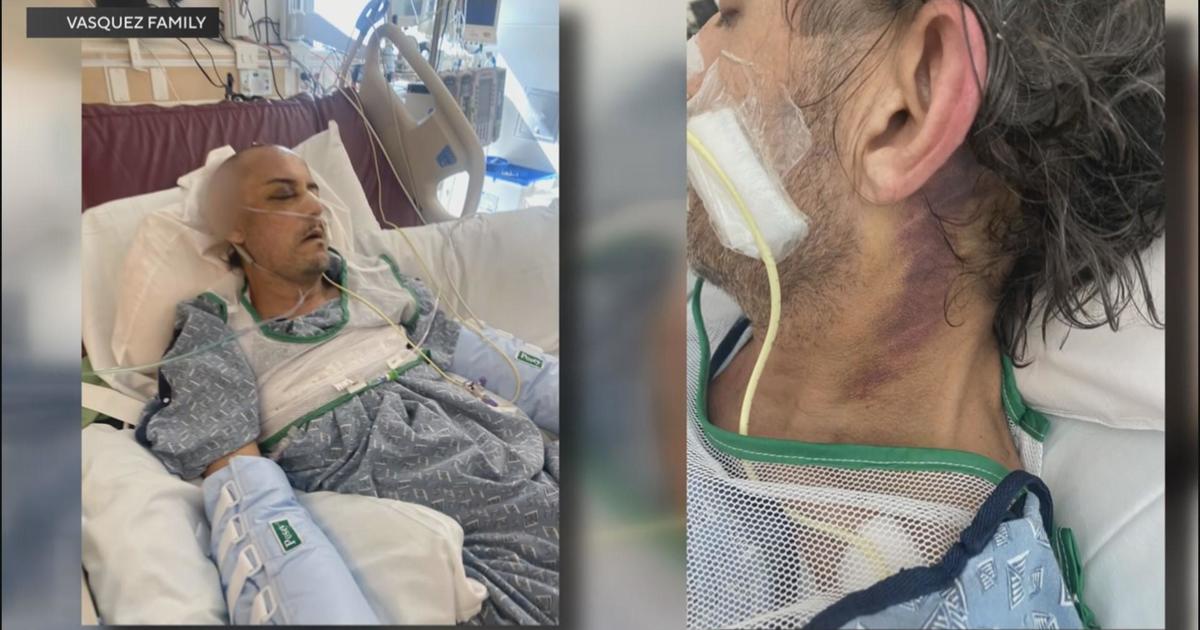Retired Marine Receives Cutting Edge Bionic Hand After Amputation: 'It's Like I Have A Hand Again'
LOS ANGELES (CBSLA.com) — What once seemed like science fiction is now a reality that is helping a wounded former U.S. Marine change his life.
Retired Staff Sgt. James Sides was on deployment in Afghanistan, dismantling bombs, when on July 15 of 2012, his fears, as well as those of his fiance Amy, became realized.
"It was booby trapped, and when I was on top of it, it detonated," Sides said.
The explosion cost Sides his right hand, and in a single moment, threatened to change his world forever.
Amy still has the voicemail James left her, in which he said, "Hey Amy, it's me, James. I got hurt. So, I'll try to call you back as soon as I can. Bye beautiful."
"My heart dropped," Amy recalled. "I've never felt like that before."
Recovering at Walter Reed Hospital in Washington D.C., however, where Amy flew every month to be with James, the wounded Marine showed remarkable perseverance, and never let go of his spirit.
It was perhaps these qualities that led to the most significant delivery of hope James and Amy had known since the explosion.
Staff Sgt. James Sides was chosen to be the first person in the world to receive a first-of-its-kind bionic hand.
The hand contains eight sensors, which are implanted just below the elbow. The sensors receive signals, which are sent from his brain to his muscles, which, in turn, command the movement of the hand.
With the bionic hand, Sides has the strength to be able to safely grasp as much as 30 pounds, while he also has a touch gentle enough to pick up a coin, or move an egg.
The pressure he uses is completely under his control.
"It's like I have a hand again," Sides told CBS2's Lisa Sigell. "I had all three ranged of motion down — open, close, rotate, thumb, I can do it all simultaneous. It was amazing. I could do two or three tasks without touching my prosthetic with my left hand."
Sides' journey to his scientifically-enhanced recovery began at the Alfred Mann Foundation in Santa Clarita.
It was there that the ability to help people like James Sands began with a tiny sensor, modern technology and a strong desire to make a difference.
On a visit to Walter Reed Hospital, Alfred Mann Foundation CEO Dave Hankin says he took note of the struggles amputees were experiencing.
"Sensors were on the outside of the arm, and affected by heat or movement, making the hand go haywire sometimes, and if you want to move the thumb, you have to move it manually with the other hand," Hankin said. "Nothing was fluid."
Setting the goal of creating better lives for amputees, Hankin put together his team of scientists, and the sensor, known as the Imes, was born.
"With the Imes, they think, and it happens naturally," Hankin said. "Like a natural hand."
While the Imes sees its introduction to the world with James Sides, the foundation is already working to improve and streamline the model, with the hope that it will help a great deal more people in the future.
"This can be a huge impact for humanity," Hankin said. "And that's why we do the project."
Meanwhile, while James and Amy can focus on a bright, promising future, they can also reflect on the road that brought them to where they are.
"She was there for probably the worst part of my life," James said. "And she stayed."
"From here, we just get to be happy, and enjoy the extra abilities that he's been given," Amy said.
In the end, thanks to the use of the Imes bionic arm, James Sides says that he has one gift that he will particularly treasure on his wedding day.
"We'll be able to hold hands, and then I will still be able to put the ring on her finger, while holding her hand with both of mine."
To learn more about The Alfred Mann Foundation's research into improving prosthetic limbs, visit their website here.
For more on James Sides' experience with his Bionic Hand, click here.



